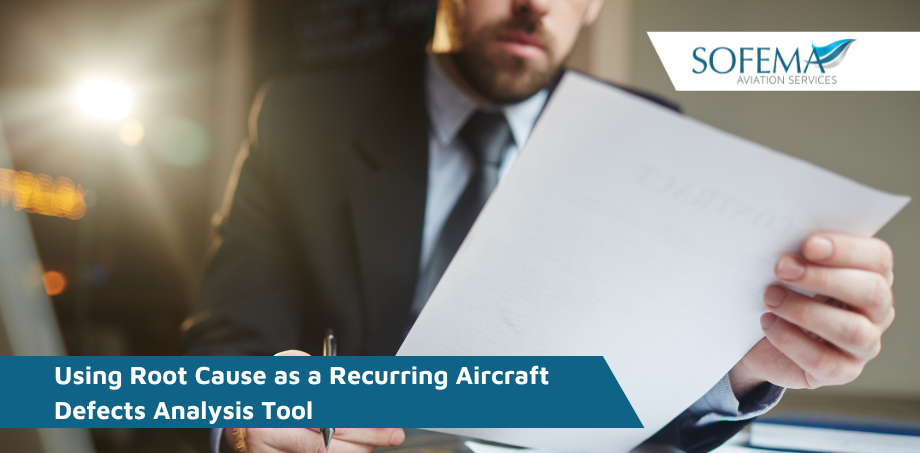Sofema Aviation Services (SAS) considers the use of Root Cause analysis techniques to promote the effective assessment of Recurring Aircraft Defects.
Introduction – What Is Root Cause Analysis and Where is the Benefit related to Recurrent Aircraft Defects?
Root cause analysis is the method in which the reason for the cause of the defect is evaluated and identified so as to identify the containment, corrective and preventive action, which will contribute to the prevention of the defect’s recurrence.
- We have a reasonable expectation of a low level of defects – moreover, when defects do occur, we expect them to be fixed as effectively and efficiently as possible.
- With a Root Cause remaining unidentified – the likelihood of re-occurrence grows which is problematic on multiple levels.
- When there is a recurring issue, it is important to understand why the solution implemented failed to prevent the defect from reoccurring.
- If it is a new issue, then the root cause should drive a detailed understanding culminating in mitigation action.
Performing Root Cause Analysis
A root cause diagnosis can be done with the use of various tools like 5 Whys, fault tree analysis, Ishikawa (fishbone) diagram, cause and effect diagram, etc., and so on and so forth. The root cause is done by evaluating the inputs, process, and the impact on the output.
Root Cause Diagnosis and Validation
- Containment
o Detailed definition of the defect/problem.
o Steps for an immediate response – rework.
- Analyze
o What caused the Defect / Problem?
o Consider Inputs /Process/Environment.
o Include where possible all variables.
o Use 5 Why & Fishbone for Initial or Low Impact review.
o Why did the current system not prevent the problem?
o Is this a known or new issue?
o If known why did previous mitigations not effect a solution?
- Improvement / Mitigations
Cautionary Note – the Problem with RCA
By its name Root Cause Analysis (RCA) implies all be it inadvertently that a single root cause can be found, the term ‘root cause analysis’ promotes a flawed reductionist view.
- Such a reduction often results in a simple linear narrative that impacts the potential for more complex, and potentially rewarding outcomes whereby multiple root causes as well as several (in each root cause element) contributing factors.
- When identifying Defect /Event Attributes Ensure:
o You go deep enough to bring out the underlying causes
o Over analyse by seeking out generalizations
Next Steps
Follow this link to our Library to find & Download related support documents.
Note – Sofema Aviation Services offers the following training in support of the understanding regarding development of an effective Defect Control Process within a Maintenance Control Centre:
For additional questions or to register please email team@sassofia.com
Tags:
aviation, aviation safety, Root Cause Analysis, Sofema Aviation Services, SAS blogs, Aircraft defects, Repetitive Defect Management, Recurring Aircraft Defects





